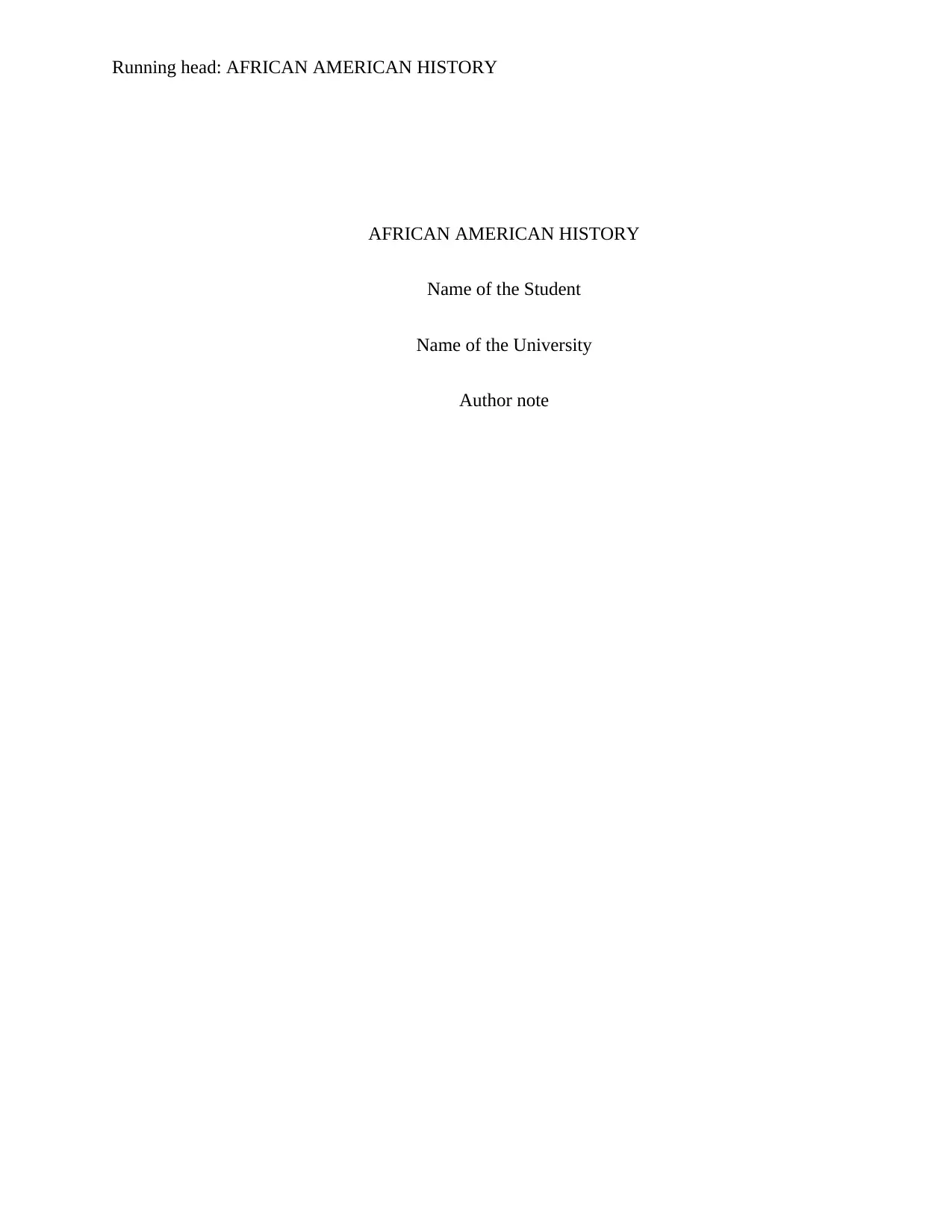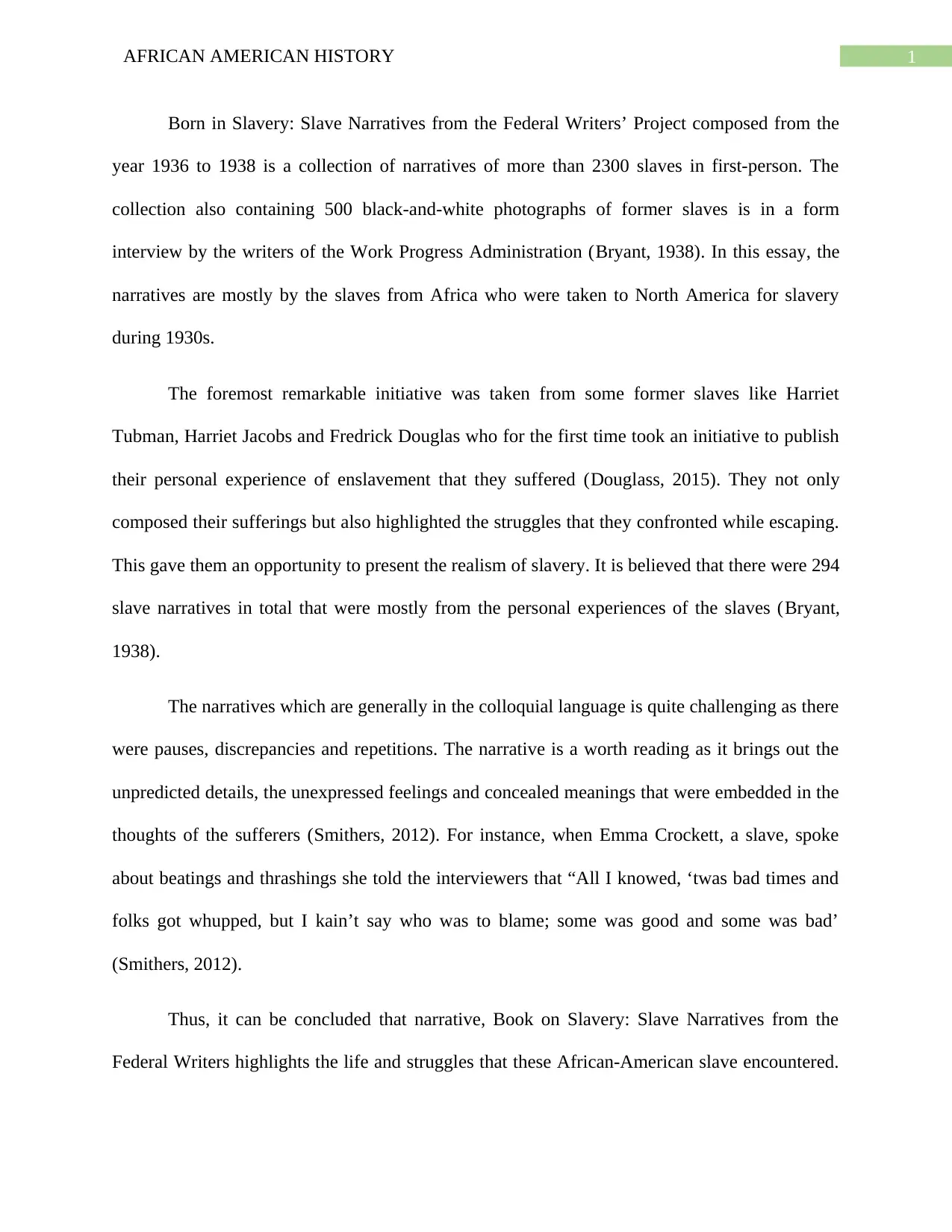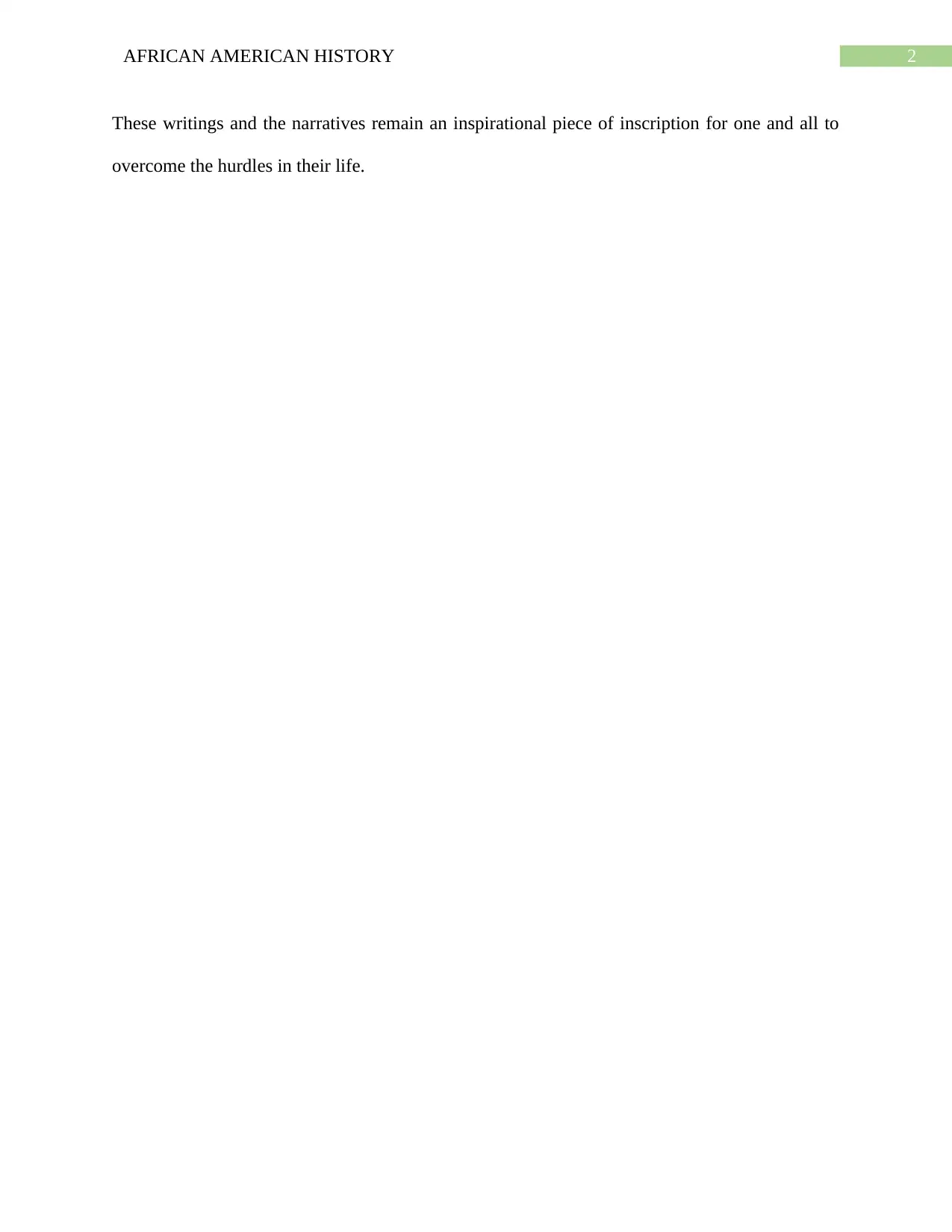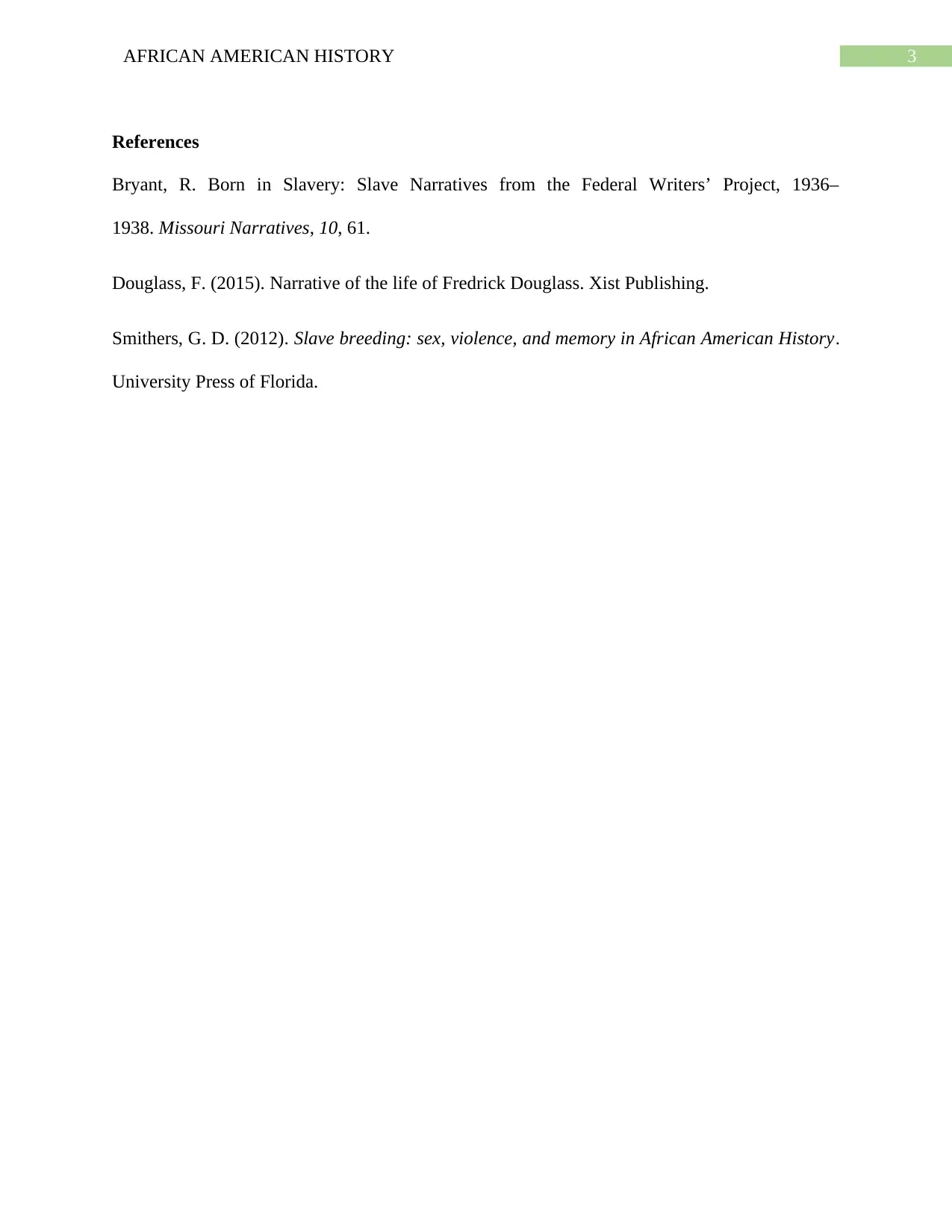African American History: Slave Narratives Assignment Analysis
VerifiedAdded on 2020/04/13
|4
|450
|62
Essay
AI Summary
This essay analyzes slave narratives from the Federal Writers' Project (1936-1938), focusing on the experiences of enslaved African Americans. The assignment examines the narratives of over 2300 slaves and 500 photographs, highlighting the struggles, resilience, and perspectives of those who endured slavery. The essay references the work of prominent figures like Harriet Tubman and Frederick Douglass, and explores the challenges and nuances of interpreting these first-person accounts. The narratives reveal details, feelings, and meanings that were often unexpressed. The essay provides insights into the brutality of slavery and the strength of the human spirit, drawing upon sources like Douglass's narrative and Smithers's work on slave breeding.
1 out of 4











![[object Object]](/_next/static/media/star-bottom.7253800d.svg)